|
WW II Ballistics -Russian 152mm Guns |
||


|
The ballistics data of the Russian 152mm guns seem to have a problem. As with other 1939 and earlier Russian firing tables they are in error. The early firing table can be found on page 25 here. PDF link It has no striking velocities on any shell table. But time of fights are listed. These unfortunately don't make any sense. The BR-540 APHE shell takes just as long to travel the first 500 meters as does it take to travel from 1500m to 2000m. Thus it doesn't lose any velocity. On the other hand the 152mm ML-10 firing tables have been updated, corrected and released in 1968. This does have actual firing tables for the shorter 152mm gun. Link DJVU The 152mm ML-20 report does have a penetration table (left). This is a calculated result using the DeMarre formula with K=2400. Since it is cal |
||
|
culated one should be able to backwards derive the impact velocity. Unfortunately doing this only produces unrealistic ballistics. So my solution is to use the ballistic coefficient found by the ML-10 tables for the ML-20 gun. |
||
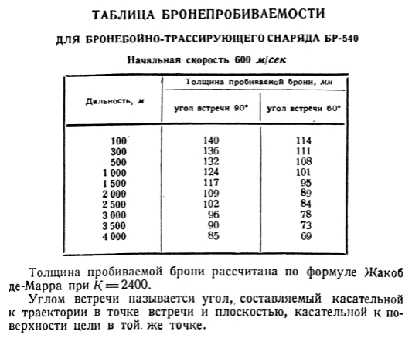
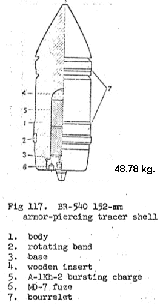
|
|
||
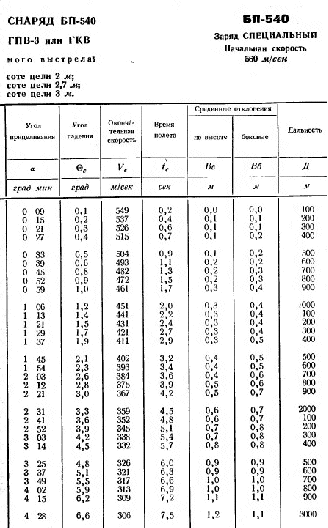
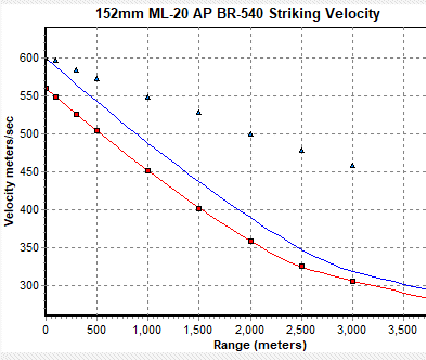
|
The ML-10 firing table updated and released in 1968 (left) has striking velocities as well as correct time-of-flights. The MV is only 40 m/s less than the ML-20 so solving for the ballistics would work for both guns. In the above image the striking impact values from the firing table are plotted (red boxes) where a ballistic solution can be found. When the actual ballistic coefficient of the ML-10 is used with a MV of 600 m/s it produces the blue line. This shell was introduced after May 1943. Citation. |
||
|
Note - small blue triangles show where solving for velocity using DeMarre with the ML-20 leads one. |
||
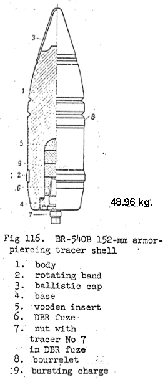
|
The BR-540B shell (left) was used by ML-20 and later guns. |
||

|
The penetration of the US 155mm M-1 Long Tom and other US 155mm guns are found in original sources: US gun data 1 US gun data 2. |
||
|
It's a little more complicated. The table penetration data is Aberdeen data so would be in 240 BHN armor. Which is what Class B homogeneous armor is. So the penetration values produced by NAAB have to be run through adjustments to get 270 BHN armor as used in our tables. |
||

